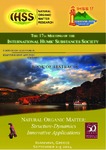Use este identificador para citar ou linkar para este item:
http://www.alice.cnptia.embrapa.br/alice/handle/doc/1001607Registro completo de metadados
| Campo DC | Valor | Idioma |
|---|---|---|
| dc.contributor.author | RODRIGUES, A. F. | pt_BR |
| dc.contributor.author | NOVOTNY, E. H. | pt_BR |
| dc.contributor.author | OLIVEIRA, R. R. | pt_BR |
| dc.date.accessioned | 2014-12-04T11:11:11Z | pt_BR |
| dc.date.available | 2014-12-04T11:11:11Z | pt_BR |
| dc.date.created | 2014-12-04 | pt_BR |
| dc.date.issued | 2014 | pt_BR |
| dc.identifier.citation | In: MEETING OF THE INTERNATIONAL HUMIC SUBSTANCES SOCIETY, 17., 2014, Ioannina. Natural organic matter: structure-dynamics innovative applications: book of abstracts. Ioannina: University of Ioannina, 2014. p. 277-278. | pt_BR |
| dc.identifier.uri | http://www.alice.cnptia.embrapa.br/alice/handle/doc/1001607 | pt_BR |
| dc.description | During the late nineteenth century, some areas in Rio de Janeiro - Brazil - has undergone remarkable transformation of the forest arising from ancient charcoal activity carried out by ex-slaves. Nowadays, in the area of abandoned ancient kilns, it is possible identify charcoal in the soil. The charcoal weathering, in another anthropic soil, the Terra Preta de Índios (TPI), generated a peculiar soil organic matter, i.e very recalcitrant and with high cation exchange capacity (CEC), resulting in a resilient soil against degradation by intensive use. Thus, the structural comparison, by 13C Nuclear Magnetic Resonance, of the humic acids (HA) from paleo-charcoal kiln and from TPI facilitate to confirm the hypothesis that the natural weathering of charcoal in the soil generate this peculiar organic matter. The result showed that the HA from paleo-charcoal kiln in Rio de Janeiro show similar features from TPI, i.e: policondensed aromatic rings heavily functionalised with carboxylic groups. | pt_BR |
| dc.language.iso | eng | eng |
| dc.rights | openAccess | eng |
| dc.subject | Carvoaria | pt_BR |
| dc.subject | Terra Preta de Índios | pt_BR |
| dc.subject | Carbono pirogênico | pt_BR |
| dc.subject | Ressonância magnética nuclear do carbono-13 | pt_BR |
| dc.title | Chemical composition of humic acids extracted from soils influenced by ancient charcoal production in Rio de Janeiro - Brazil. | pt_BR |
| dc.type | Artigo em anais e proceedings | pt_BR |
| dc.date.updated | 2014-12-04T11:11:11Z | pt_BR |
| dc.subject.thesagro | Carvão vegetal | pt_BR |
| dc.subject.thesagro | Carbono | pt_BR |
| dc.subject.nalthesaurus | Charcoal | pt_BR |
| dc.subject.nalthesaurus | Carbon | pt_BR |
| riaa.ainfo.id | 1001607 | pt_BR |
| riaa.ainfo.lastupdate | 2014-12-04 | pt_BR |
| dc.contributor.institution | A. F. RODRIGUES, PUC-RJ; ETELVINO HENRIQUE NOVOTNY, CNPS; R. R. OLIVEIRA, PUC-RJ. | pt_BR |
| Aparece nas coleções: | Artigo em anais de congresso (CNPS)  | |
Arquivos associados a este item:
| Arquivo | Descrição | Tamanho | Formato | |
|---|---|---|---|---|
| IHSSMeetingp.277278.pdf | 523,5 kB | Adobe PDF |  Visualizar/Abrir |









